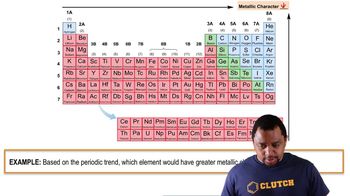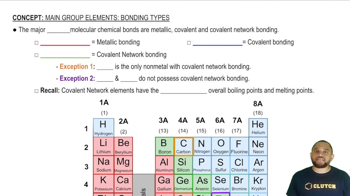Here are the essential concepts you must grasp in order to answer the question correctly.
Ionic Character
Ionic character refers to the degree to which a bond between two atoms exhibits ionic properties, which is influenced by the difference in electronegativity between the bonded atoms. A higher electronegativity difference typically results in a more ionic bond, while a smaller difference leads to a more covalent bond. Understanding this concept is crucial for comparing the ionic character of different compounds.
Recommended video:
Metallic Character Example
Electronegativity
Electronegativity is a measure of an atom's ability to attract and hold onto electrons in a chemical bond. The Pauling scale is commonly used to quantify electronegativity values, with fluorine being the most electronegative element. By comparing the electronegativity values of the elements in the given compounds, one can assess the ionic character of their bonds.
Recommended video:
Bond Type Classification
Compounds can be classified based on the types of bonds they contain: ionic, covalent, or polar covalent. Ionic compounds typically form between metals and nonmetals, while covalent compounds form between nonmetals. Recognizing the nature of the bonds in each compound listed in the question is essential for ordering them by increasing ionic character.
Recommended video:

 Verified step by step guidance
Verified step by step guidance


